What Are Biological Pouches? (Quick Answer & Overview)
Biological pouches are natural pocket-like structures found in many animals that serve to protect, carry, or nurture offspring—or even store food and tools. These pouches come in many forms, with the most famous examples in the animal kingdom including:
- Marsupial pouches (like kangaroos and koalas): Used to carry and nurse underdeveloped young until they are strong enough to survive outside.
- Brood pouches (like in male seahorses and some frogs): Where eggs or embryos develop, often with the parent providing oxygen and nutrients.
- Storage pouches (like sea otters' arm pockets or chipmunk cheek pouches): For stashing food, tools, or personal treasures.
- Other unique forms: Seen in echidnas, certain crustaceans, and even in plant-like adaptations.
In short:
Biological pouches are specialized anatomical structures that help animals care for, carry, or protect their offspring or resources. They represent remarkable evolutionary solutions to survival challenges.
I'm Mortuary Cooler, a national-level mortuary cooler supplier with deep expertise in biological pouches—from animal evolution to modern bio-inspired safety packaging. My experience bridges the worlds of nature-inspired design and practical funeral home solutions.
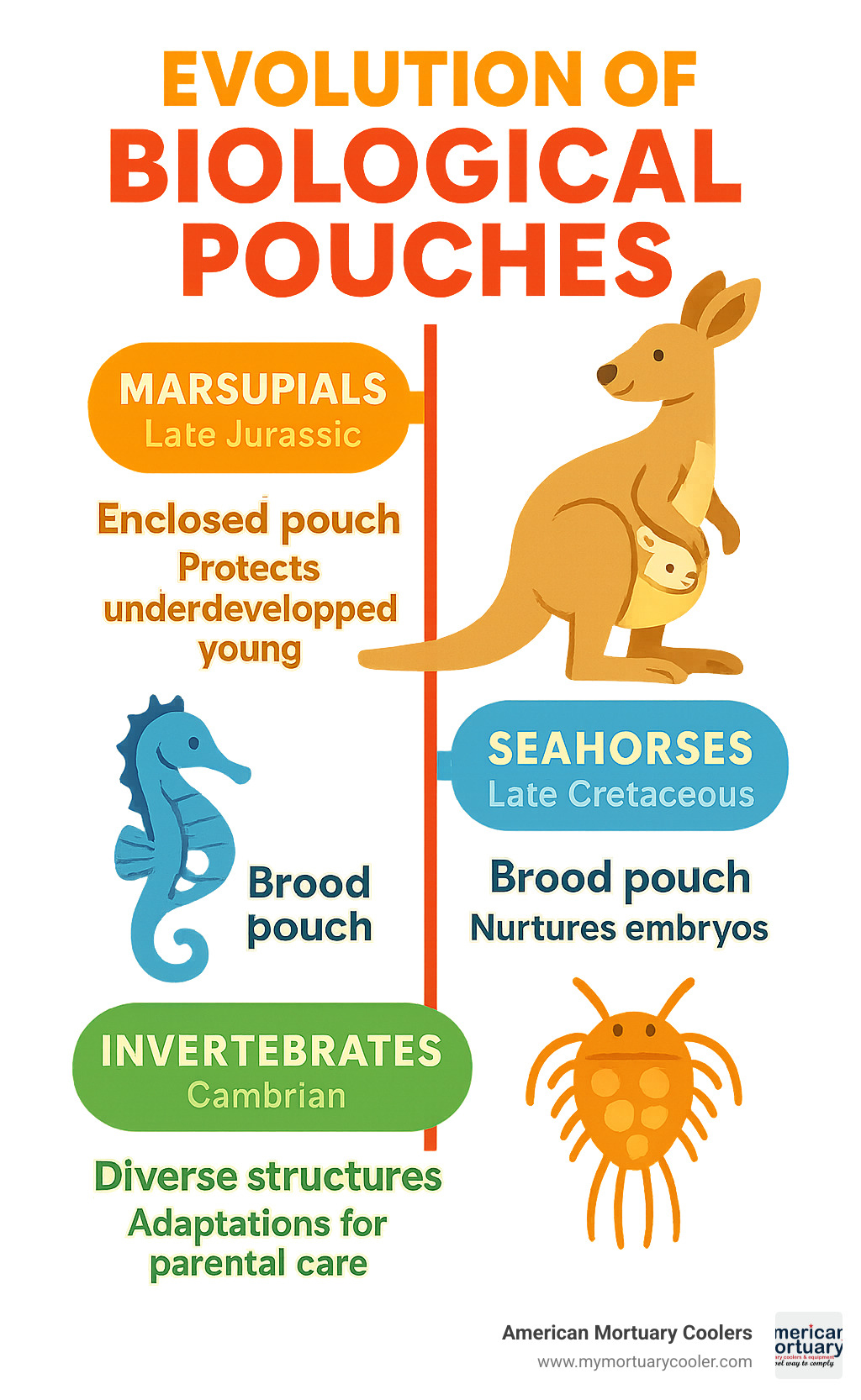
Biological pouches vocab explained:
Biological Pouches: Definition, Anatomy & Key Functions
Ever wondered what makes a kangaroo's pouch so special? Let's explore biological pouches and find what makes these natural pockets such remarkable adaptations.
A biological pouch (scientists call it a marsupium) is much more than just a simple pocket in an animal's body. It's a sophisticated living structure that has evolved to protect and nurture young, or in some cases, to store precious resources.
Anatomy of Biological Pouches
While biological pouches come in many different forms across the animal kingdom, they share some fascinating common features. Imagine a specialized pocket lined with living tissue that can adjust to the needs of its contents!
Most pouches feature walls made of specialized epithelial tissue with supportive layers beneath. These walls aren't just passive barriers – they're alive with extensive networks of blood vessels that deliver nutrients and remove waste. Many pouches also contain special glands that produce natural antimicrobial secretions, keeping the pouch environment clean and healthy for developing young.
Perhaps most impressive is the muscular control many species have over their pouches. A kangaroo mom can actually tighten or loosen her pouch opening as needed to protect her joey!
"The marsupial pouch is far more than a simple pocket," explains Dr. Emily Thornton, zoologist specializing in marsupial biology. "It's a sophisticated biological system with temperature regulation, antimicrobial properties, and the ability to adapt to the changing needs of the developing joey."
The male seahorse's brood pouch takes a different approach but is equally remarkable. This specialized abdominal chamber contains complex blood vessel networks that function almost like a placenta, nourishing the developing embryos inside.
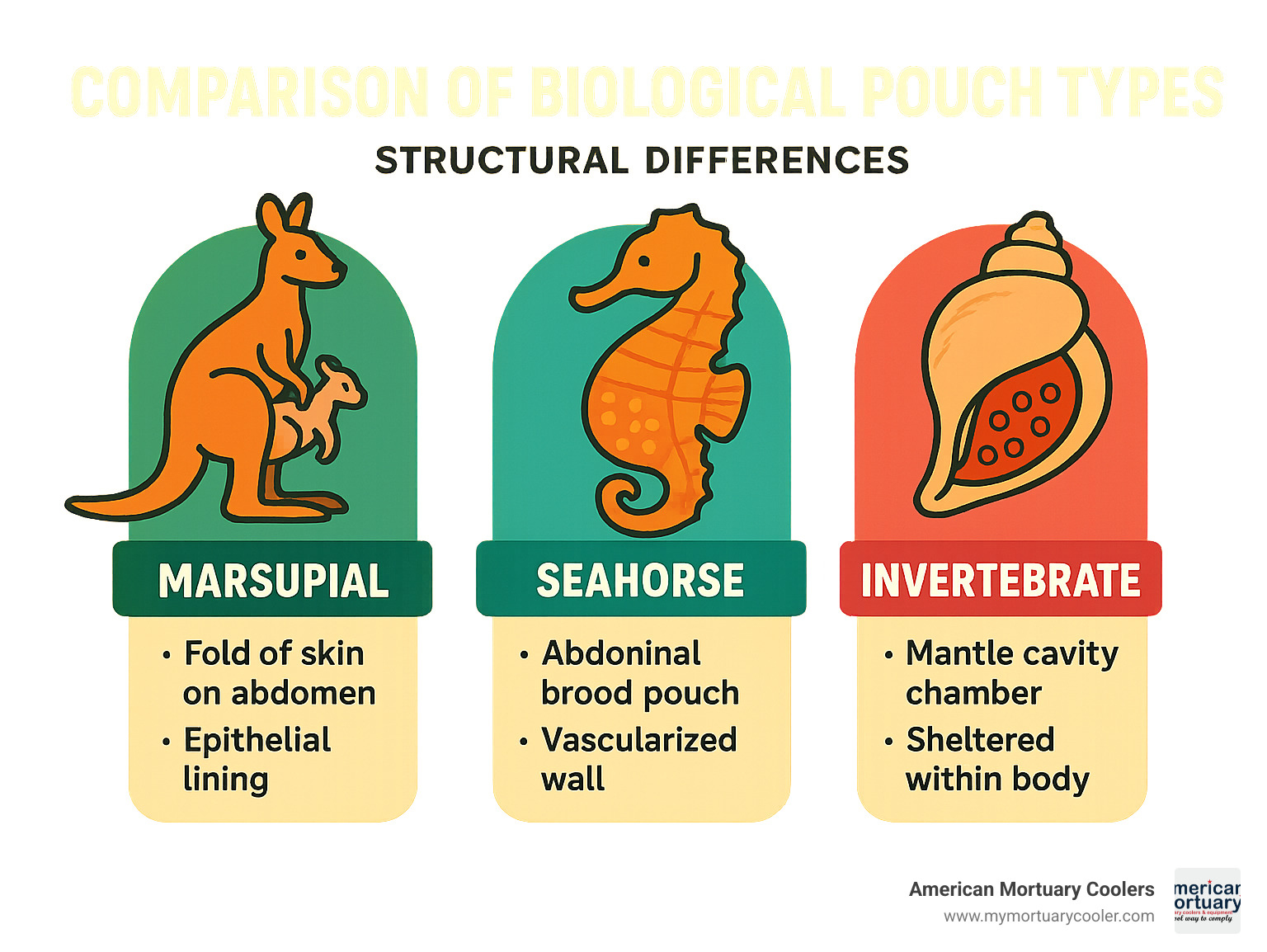
Key Functions of Biological Pouches
Biological pouches are marvels of natural engineering, serving many critical functions for the animals that possess them:
The protection they offer is perhaps their most obvious benefit – shielding vulnerable young from predators and harsh environmental conditions. But they do so much more! These living pockets maintain perfect temperatures for development, provide direct access to nutrition, and even manage waste removal.
Many pouches, like those of koalas, create their own antimicrobial environment through specialized secretions. These natural cleansers help protect their highly underdeveloped young during their extended pouch development, essentially creating a self-cleaning nursery!
The mobility advantage can't be overlooked either. Parents with pouches can travel, forage, and escape danger while keeping their young safely tucked away. For some species like chipmunks and sea otters, pouches serve as convenient storage spaces for food or even tools.
| Pouch Type | Primary Function | Notable Features | Examples |
|---|---|---|---|
| Marsupial Pouch | Nurture underdeveloped young | Contains teats, opens anteriorly or posteriorly | Kangaroo, koala, opossum |
| Seahorse Brood Pouch | Incubate and protect eggs | Placenta-like vascularization, male pregnancy | Seahorses, pipefish |
| Crustacean Brood Pouch | Protect developing eggs | Formed by modified limbs | Peracarid crustaceans |
| Storage Pouch | Carry food or tools | Expandable, specialized lining | Chipmunk, sea otter |
| Temporary Pouch | Short-term offspring protection | Formed by muscle contraction | Echidna |
The diversity of biological pouches across the animal kingdom shows just how valuable this adaptation has been for survival. From the complex marsupial pouch to the specialized brood chambers of seahorses, these natural pockets represent millions of years of evolutionary refinement. Want to learn more about why female kangaroos have these remarkable pouches? Check out Why female kangaroos have pouches – Find Wildlife for a deeper dive.
The Spectrum of Biological Pouches in Nature
Nature has a wonderful way of finding similar solutions to different problems. The evolution of biological pouches is a perfect example of this – they've popped up independently across the animal kingdom, from mammals to fish to tiny invertebrates. It's what scientists call convergent evolution, where completely unrelated creatures develop similar traits to solve life's challenges.
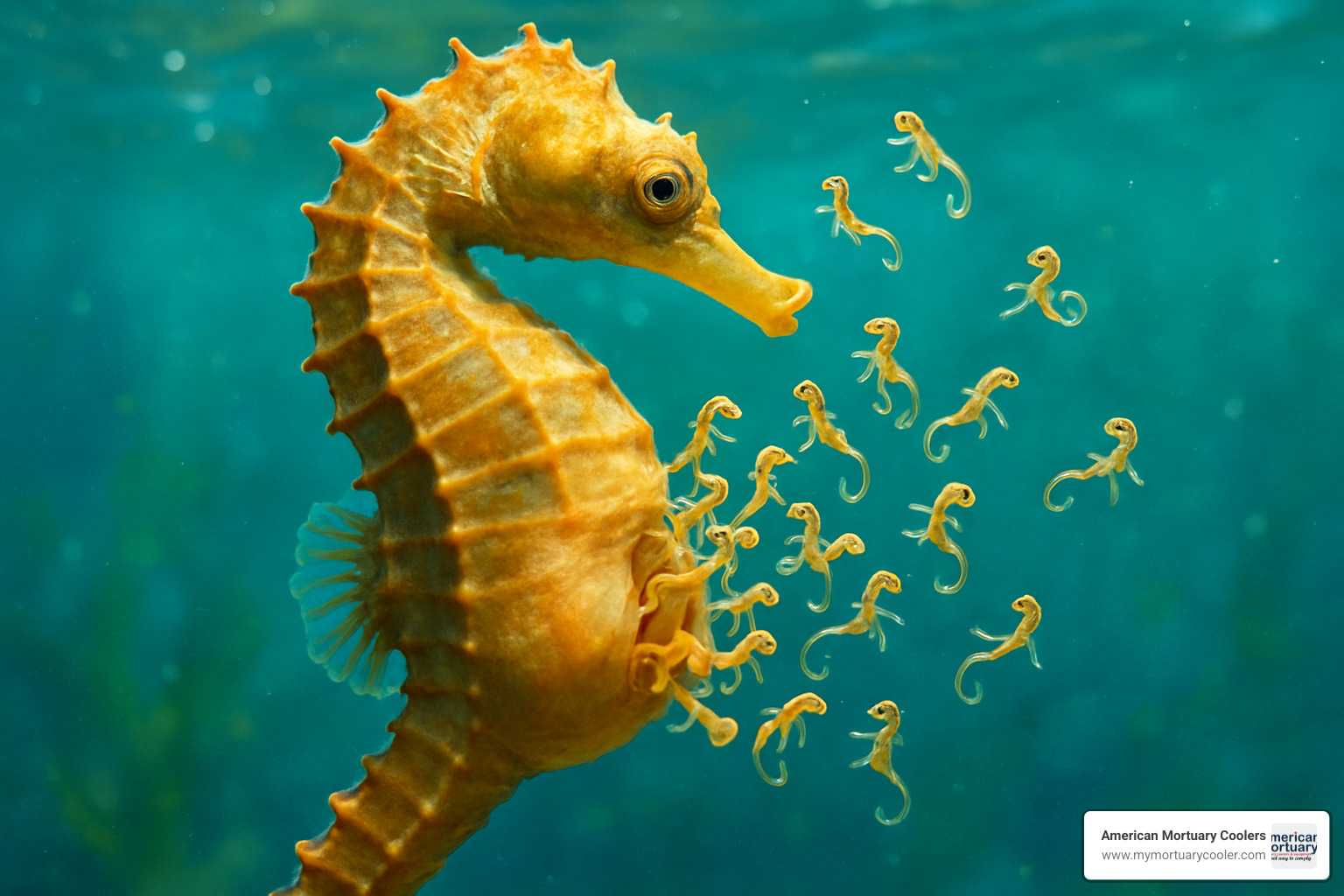
Biological Pouches in Marsupials: The Archetype
When you hear "animal with a pouch," you probably picture a kangaroo with a joey peeking out – and for good reason! Marsupials (literally "pouched animals") showcase nature's most famous and well-developed pouch designs.
What makes marsupials special is their unique reproductive approach. Unlike other mammals, they give birth to incredibly underdeveloped babies after surprisingly short pregnancies – sometimes just 12 days! These tiny, almost embryo-like newborns then make an incredible journey, crawling into mom's pouch to continue developing while attached to a teat.
The pouch designs are wonderfully varied to suit each animal's lifestyle. Kangaroos and wallabies sport forward-facing pouches that open toward the head, keeping joeys safe during all that hopping. These sophisticated pouches contain four teats and even have built-in cleaning mechanisms – nature's version of a self-cleaning nursery!
Koalas, on the other hand, have backward-facing pouches opening toward the rear. This clever design protects babies when mom climbs trees, preventing falls. Koala pouches contain just two teats and produce natural antimicrobial secretions to keep baby safe from germs.
Similarly, wombats have backward-facing pouches, but for a different reason – to prevent dirt from getting in while they dig their burrows. Meanwhile, opossums have forward-facing pouches with a surprising 13 teats arranged in a horseshoe pattern, though some opossum species make do with just a simple fold of skin around the mammary area.
Even more fascinating is how some marsupials can pause embryo development – a process called embryonic diapause. This remarkable adaptation allows animals like the tammar wallaby to put a pregnancy "on hold" until conditions improve or until an existing joey leaves the pouch.
"Marsupial reproduction has often been viewed as 'primitive' compared to placental mammals," notes wildlife biologist Dr. Sarah Johnson. "But in reality, it's simply a different reproductive strategy with its own advantages. Marsupials invest fewer resources during gestation and more during lactation, allowing them to reproduce more quickly if a young is lost."
Biological Pouches Beyond Mammals: Seahorses, Frogs & More
The world of biological pouches stretches far beyond kangaroos and koalas, appearing in some truly unexpected places.
Male seahorses and pipefish turn traditional gender roles upside down with one of nature's most remarkable role reversals – it's the dads who get pregnant! The male seahorse has a specialized brood pouch on his abdomen where the female deposits her eggs during an elaborate underwater dance. After fertilizing them, he seals them safely inside.
During his 10-25 day pregnancy, dad's pouch works remarkably like a mammalian placenta. The pouch lining becomes rich with blood vessels, he provides oxygen to the developing embryos, carefully regulates salt concentrations, and even transfers nutrients to his growing babies.
A fascinating study published in Zoological Letters revealed that the seahorse brood pouch develops through three distinct stages, each with specific molecular markers. Researchers found that "C-type lectin haCTL IV is specifically localized to luminal epithelium in later stages, while haCTL II is found in both outer and luminal epithelia," showing a level of tissue specialization surprisingly similar to what we see in mammalian placentas.
Marsupial frogs (genus Gastrotheca) have evolved an entirely different approach. Female marsupial frogs carry their developing eggs in a special pouch on their backs. Depending on the species, mom might release tadpoles from her back pouch, or she might nurture them until they're fully formed froglets ready to face the world.
Even tiny peracarid crustaceans (including amphipods and isopods) have evolved their own version of pouches. Females create special chambers called marsupiums using modified plates on their legs, carrying fertilized eggs until they hatch into miniature versions of the adults.
The echidna, one of only two egg-laying mammals on Earth, creates a temporary pouch by contracting its abdominal muscles. After laying a single egg, the female rolls it into this muscle-formed pocket where it stays warm and protected for about 10 days before hatching. The baby echidna (adorably called a "puggle") remains in this pouch until its spines begin to develop – at which point mom promptly evicts her increasingly prickly offspring!
Even some snails and slugs (ovoviviparous gastropods) have internal brood pouches where eggs develop until they hatch into juvenile snails, providing protection during life's most vulnerable stage.
Storage & Utility Pouches Outside Reproduction
Not all biological pouches are baby-carriers – some serve as nature's ingenious storage solutions.
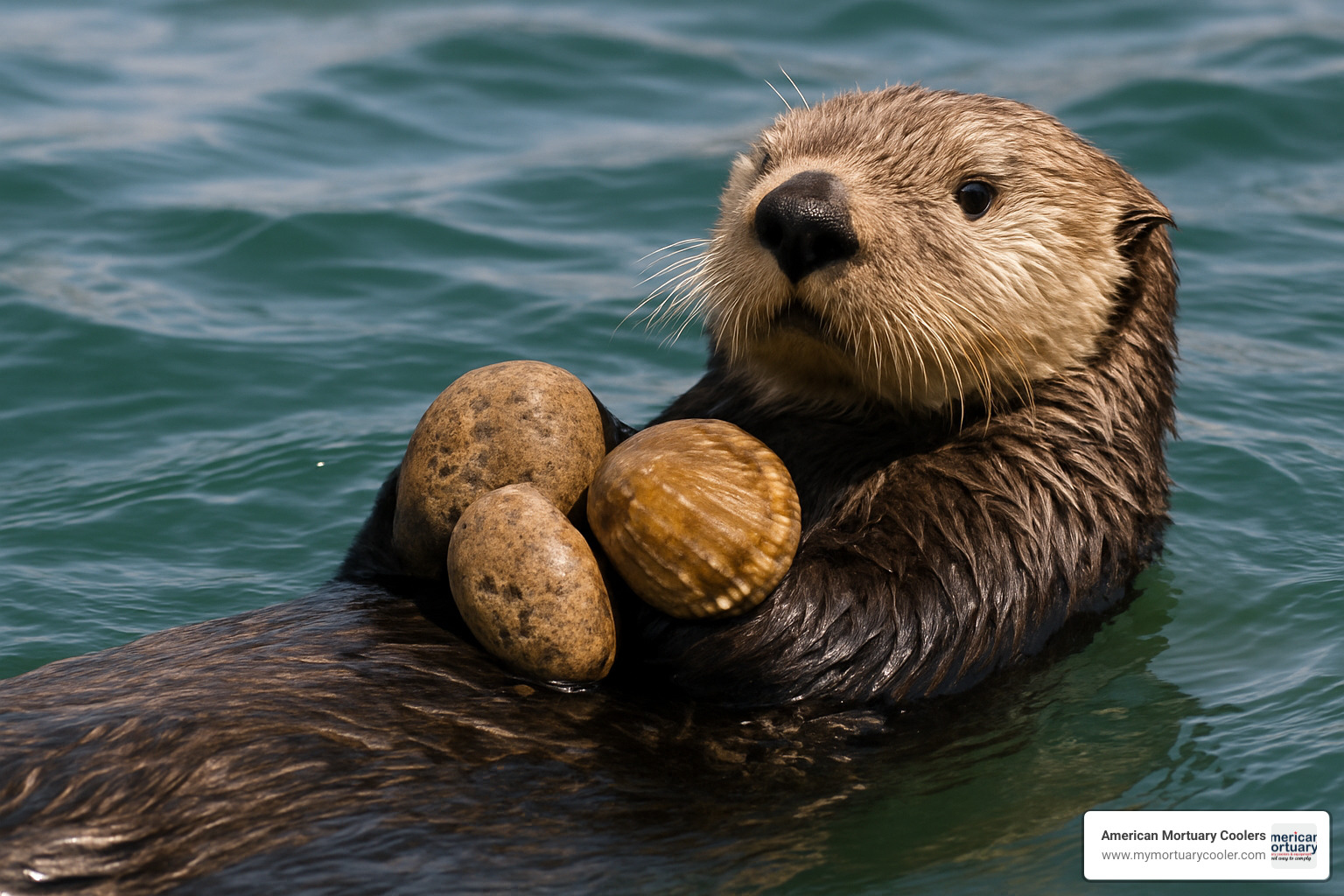
Sea otters have loose skin pouches under each forearm where they store food items and – most charmingly – their favorite rock, which they use as a tool to crack open shellfish. Most sea otters have a preferred 'pocket' side (typically the left) where they keep their prized rock, sometimes for their entire lives.
"Sea otters are one of the few non-primate animals known to use tools," explains marine biologist Dr. Michael Chen. "Their forearm pouches allow them to keep their favorite rock while diving for food, essentially creating a primitive tool belt."
Chipmunks possess expandable cheek pouches that can stretch to an astonishing size – sometimes nearly as large as their entire body! These natural "shopping bags" allow them to gather large quantities of food quickly and transport it back to their burrows for storage, making their foraging time much more efficient.
Pelicans sport perhaps the most visible pouch of all – that large gular sac (throat pouch) they use to scoop up fish and water. This remarkably expandable pocket can hold up to three gallons of water – more than three times what their stomach can hold! After catching fish, pelicans drain the water before swallowing their meal, like nature's own fishing net.
These clever storage adaptations show how biological pouches have evolved far beyond reproduction, helping animals efficiently gather, transport, and store resources in challenging environments – nature's version of the utility belt or shopping bag!
Adaptations, Survival Benefits, Challenges & Bio-Inspired Innovations
Nature has always been our greatest teacher, and biological pouches are prime examples of evolution's ingenious problem-solving. These remarkable structures offer fascinating insights into how animals have adapted to protect their most precious cargo – whether that's their young or essential resources.
Remarkable Adaptations in Biological Pouches
The specialized tissues found in biological pouches showcase nature's incredible engineering. Male seahorses, for instance, develop complex networks of blood vessels in their brood pouches that function remarkably like a mammalian placenta. These vessels don't just provide oxygen to the developing embryos – they actively remove waste products too, creating a complete life-support system.
Koala mothers take a different approach to protection. Their pouches produce specialized antimicrobial secretions that essentially create a self-cleaning environment. It's nature's way of ensuring those tiny, vulnerable joeys stay protected from harmful infections during their earliest days.
Temperature control is another marvel of pouch design. Despite the outside world's fluctuating conditions, marsupial pouches maintain remarkably stable internal temperatures – crucial for the proper development of their underdeveloped young. Think of it as nature's thermostat, always keeping baby at the perfect temperature.
"What's particularly fascinating is how marsupial mothers can produce different milk compositions from different teats simultaneously," explains wildlife biologist Sarah Reynolds. "It's like having multiple recipes cooking at once, each perfectly custom to joeys at different developmental stages."
Many pouches also feature sophisticated muscular control. These natural sphincters allow precise opening and closing, protecting young from rain, dirt, or potential predators – a biological door that opens and closes exactly when needed.
Survival Benefits and Evolutionary Advantages
These clever adaptations translate into significant survival edges. Biological pouches provide a safe harbor for vulnerable offspring to complete their development, protected from the harsh realities of the outside world. For marsupials with embryonic diapause, pouches offer remarkable reproductive flexibility – they can essentially pause development during environmental stress and resume when conditions improve.
The short gestation periods associated with pouch-bearing animals mean less upfront maternal investment before birth. If disaster strikes and offspring are lost, the mother can quickly reproduce again – a significant advantage in unpredictable environments.
Unlike nest-bound species, pouch-bearing parents maintain their mobility while carrying young. A kangaroo mother can continue foraging with her joey safely tucked away, getting the nutrition she needs while keeping her young protected.
For animals with storage pouches, like chipmunks, these natural pockets allow efficient gathering during times of plenty. They can quickly collect food and transport it to safety, maximizing their foraging efficiency when resources are available.
Challenges of Pouch-Based Reproduction
Despite these advantages, biological pouches aren't without their challenges. Maintaining these specialized environments requires significant energy expenditure. The parent must produce antimicrobial secretions, regulate temperature, and in some cases, supply specialized nutrition – all metabolically demanding tasks.
As young grow within the pouch, they can restrict the parent's movement. A female kangaroo with a large joey may find her normally impressive jumping ability somewhat compromised, potentially increasing her vulnerability to predators.
Without proper antimicrobial mechanisms, the warm, moist environment of reproductive pouches could potentially harbor harmful pathogens. Nature has addressed this through specialized secretions, but it represents an evolutionary challenge these species had to overcome.
Male seahorses face a unique reproductive limitation – they cannot take on new eggs until their current brood is born. This creates natural spacing between reproductive cycles that placental mammals don't necessarily face.
Some pouch-raised young may also experience developmental limitations compared to placental mammals with longer in-utero development. The trade-off for earlier birth is often a longer external developmental period.
Bio-Inspired Innovations
The neat solutions found in biological pouches haven't gone unnoticed by human innovators. We've drawn inspiration from these natural designs to create practical solutions for very human problems.
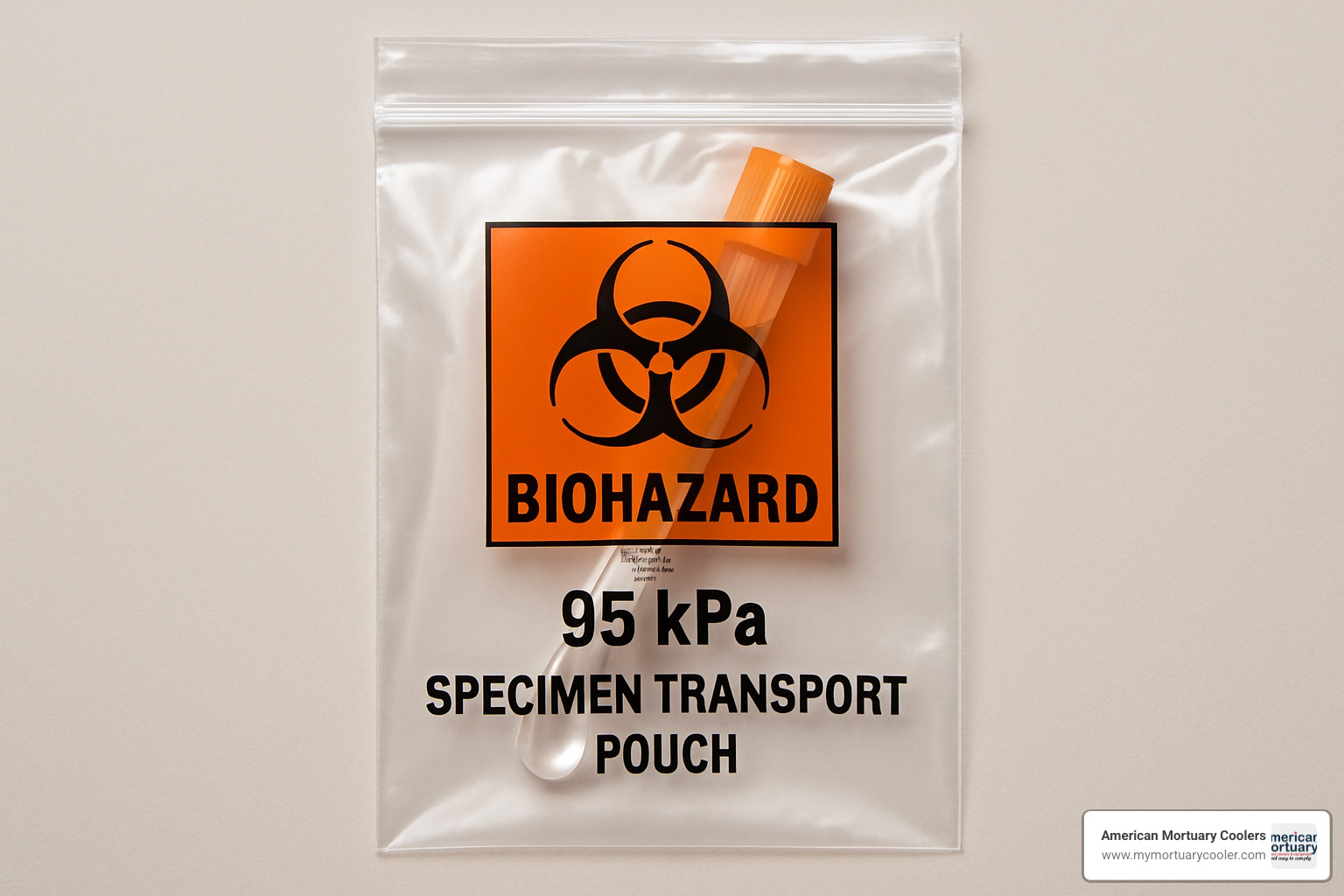
The Marsupial® medical drain belt provides post-surgical patients with a comfortable way to manage drainage tubes. Made from soft terry-cloth with an adjustable belt, it eliminates the uncomfortable taping or pinning of drainage tubes to clothing. Just as a kangaroo pouch protects its vulnerable joey, these medical pouches protect healing surgical sites while improving patient comfort.
For transporting biological specimens safely, engineers developed the 95 kPa bio-pouch® packaging system. These specialized containment pouches can withstand significant pressure differentials, ensuring potentially infectious materials remain securely contained during transport – much like how natural pouches maintain secure internal environments despite external pressures.
Modern sterilization pouches incorporate multi-parameter indicators that monitor time, temperature, and sterilant presence – mimicking how biological pouches maintain tightly controlled internal conditions. These smart pouches change color to indicate when proper sterilization has occurred, providing visual confirmation of safety.
At American Mortuary Coolers, we've taken notes from nature's playbook when designing our disaster pouches. As we explain in our article on Disaster Pouch vs Body Bags Explained, these specialized containment systems incorporate principles we observe in nature's most effective containment strategies.
"When I look at how a kangaroo pouch protects its joey, I see the same fundamental principles we strive for in our containment systems," shares James Henderson, our lead designer. "Secure containment, protection from external factors, and maintaining structural integrity under pressure – nature figured this out long before we did."
By studying how biological pouches solve complex problems, we continue finding inspiration for human innovations that improve safety, comfort, and efficiency across multiple industries – from healthcare to mortuary science.
Conclusion & Frequently Asked Questions
As we've journeyed through the fascinating world of biological pouches, we've finded nature's incredible ingenuity. From kangaroos nurturing their tiny joeys to male seahorses experiencing pregnancy, these remarkable structures showcase evolution's diverse solutions to life's challenges.
These natural wonders continue to inspire human innovation, particularly in fields close to our hearts at American Mortuary Coolers. The principles we observe in natural pouches—secure containment, environmental protection, and structural integrity—directly influence how we design our mortuary solutions from our Tennessee headquarters to funeral homes across the country.
When we develop our specialized containment systems, we're drawing on billions of years of evolutionary wisdom. Our custom mortuary coolers, delivered to doorsteps from Maine to California, reflect this marriage of natural inspiration and practical application. If you're curious about our approach, you might enjoy our article on mortuary coolers.
What is a biological pouch?
A biological pouch is essentially nature's pocket—a specialized anatomical structure forming a protective cavity in an animal's body. These remarkable adaptations serve various purposes, but most commonly help with offspring care or resource storage.
In marsupials like kangaroos, the pouch (officially called a marsupium) is a cozy fold of skin covering mammary glands where tiny, underdeveloped babies complete their growth journey after birth. For male seahorses, their brood pouch functions almost like a human womb, complete with placenta-like tissues delivering oxygen and nutrients to their developing young.
While these pouches come in all shapes and sizes, they share a common thread—creating a protected environment that gives their users a survival edge in a challenging world.
Which animals have the most unusual biological pouches?
Mother Nature certainly got creative when designing some biological pouches! The echidna, one of only two egg-laying mammals, creates a temporary "now-you-see-it-now-you-don't" pouch by simply contracting its abdominal muscles. When the pouch is no longer needed, it simply disappears—talk about efficient design!
Male seahorses turn traditional gender roles upside down with their specialized pregnancy pouches. After a female deposits her eggs in his pouch, dad handles the entire pregnancy, complete with contractions during birth!
Marsupial frogs might make you do a double-take with their specialized back pouches where eggs develop, sometimes skipping the tadpole stage entirely and emerging as fully-formed froglets. Meanwhile, sea otters use their forearm pouches as nature's tool belts, storing not just food but also their favorite rock for cracking open shellfish—with most showing a preference for their left pouch, just like human handedness.
Perhaps most surprising are the tiny peracarid crustaceans, which construct brood pouches from modified limb plates, creating a protective chamber utterly different from anything we see in mammals.
How have biological pouches influenced human technology?
The genius of biological pouches hasn't been lost on human inventors. The aptly named Marsupial® pouch helps post-surgical patients manage drainage tubes comfortably, eliminating the need for uncomfortable taping or pinning to clothing.
In our own industry, the principles behind the 95 kPa bio-pouch® and similar biological specimen transport systems mirror what we see in nature's most secure containment systems—pressure resistance, liquid-tight barriers, and protection from environmental threats.
Modern sterilization pouches with their sophisticated monitoring indicators reflect the same principles that allow biological pouches to maintain and monitor internal environments. Even everyday baby carriers draw inspiration from marsupial pouches, keeping infants secure while allowing parents to move freely.
Perhaps most promising is how studying the combination of flexibility and strength in natural pouches has influenced the development of more sustainable packaging solutions—a growing priority in our increasingly environmentally conscious world.
By learning from nature's time-tested designs, we continue to develop better solutions for human challenges. At American Mortuary Coolers, we're proud to be part of this tradition, creating practical, durable equipment inspired by the most ingenious designer of all—Mother Nature herself.


















